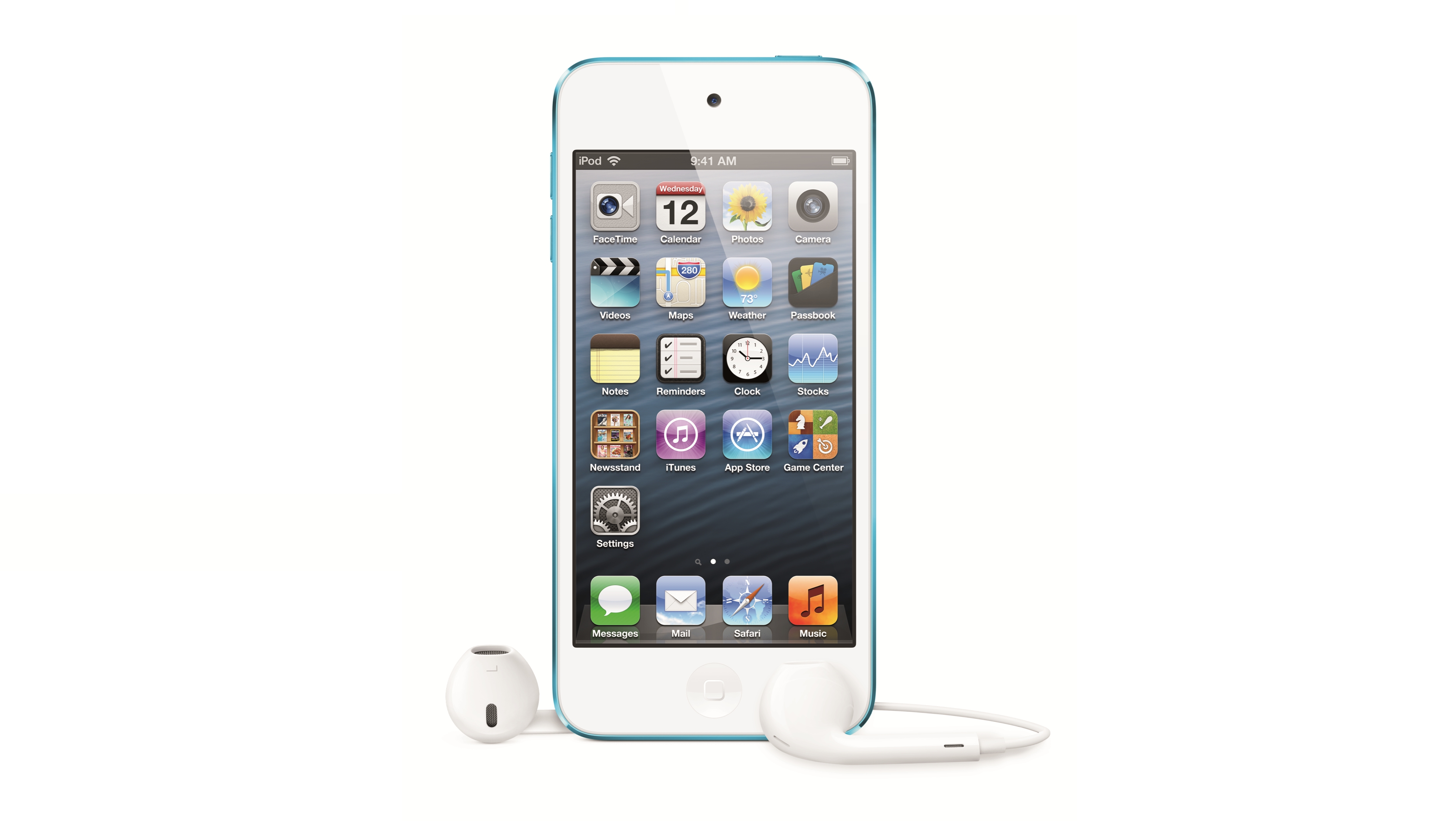Why you can trust TechRadar
The coloured new iPod touch 5th generation is a very different looking beast to the previous model, which had a metallic silver back with tapered edges. While the metallic back initially looked nice it was a magnet for smudges and fingerprints.
The aluminium back of the new touch is the only part that's coloured (the front is always white no matter what colour back you choose) and seems to be extremely fingerprint resistant – the only parts that attract smudges on the back are the small Apple logo and the word 'iPod', which are both made of glass.
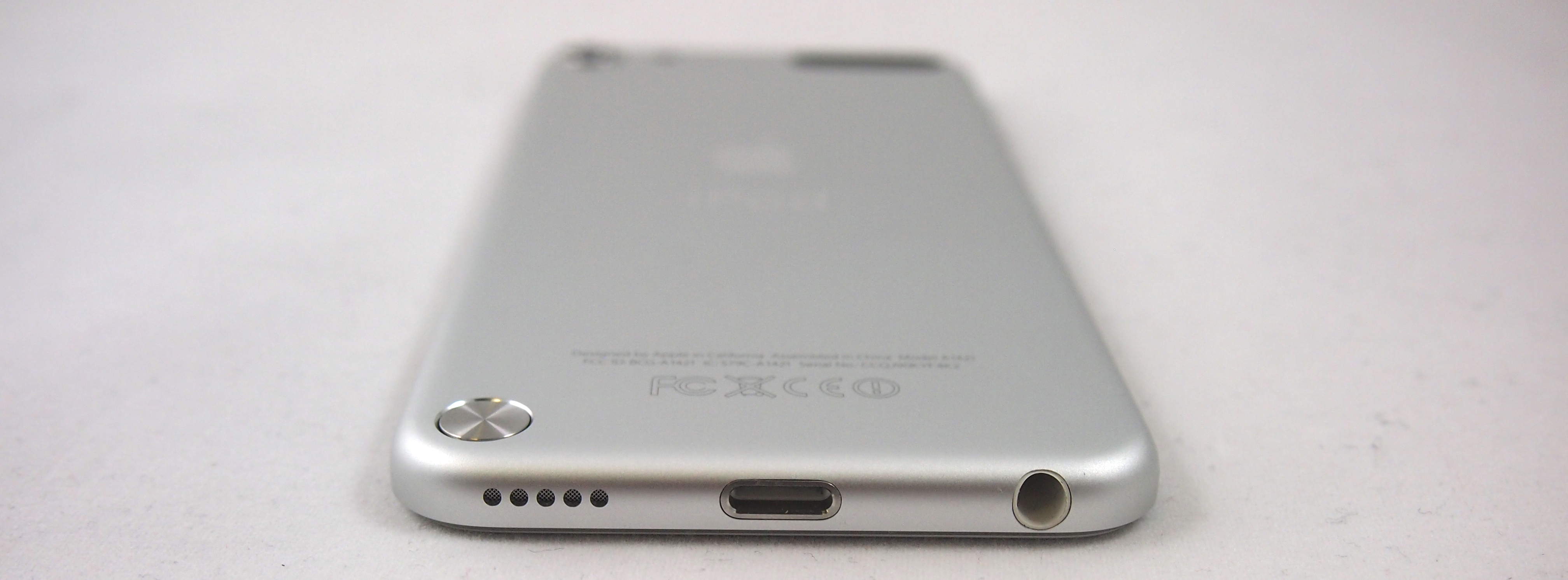
There's a little rubberised pad at the top right of the back, which covers the Wi-Fi antenna, since the aluminium covering would impede signal reception.
The flat back on the 5th generation model has genuine advantages over the previous tapered-edge design – now the sleep/wake and volume buttons are on a flat edge your fingers can find them more easily and it's possible to change volume using just one hand when the touch is lying flat on a desktop.

LEFT TO RIGHT: iPod touch 4th Gen, 5th Gen, iPhone 5
The iPod loop strap (whose colour matches the back) feels like it's made of leather and snags onto a little button on the back of the touch that protrudes from the surface when pressed. It fits snugly enough and we didn't have problems with it becoming detached. It's a good idea if you're using your touch as a camera because it gives you that extra level of security against dropping it.

The new 5th Gen is a millimetre thinner than its predecessor, and 12mm taller. The larger screen means it can fit an extra line of icons on your Home screen and you can see more of web pages and apps that are designed to take advantage of the new screen size.
We found that we had to change the way we held the new iPod touch in portrait mode if we wanted to reach the top left corner with our thumb though. While so far we've been used to resting the iPod touch on our little finger, you now have to grip the sides with all four fingers if you want to get your thumb all the way to the top corner of the screen (which is where a lot of 'back' buttons are located in apps, like Mail for example).
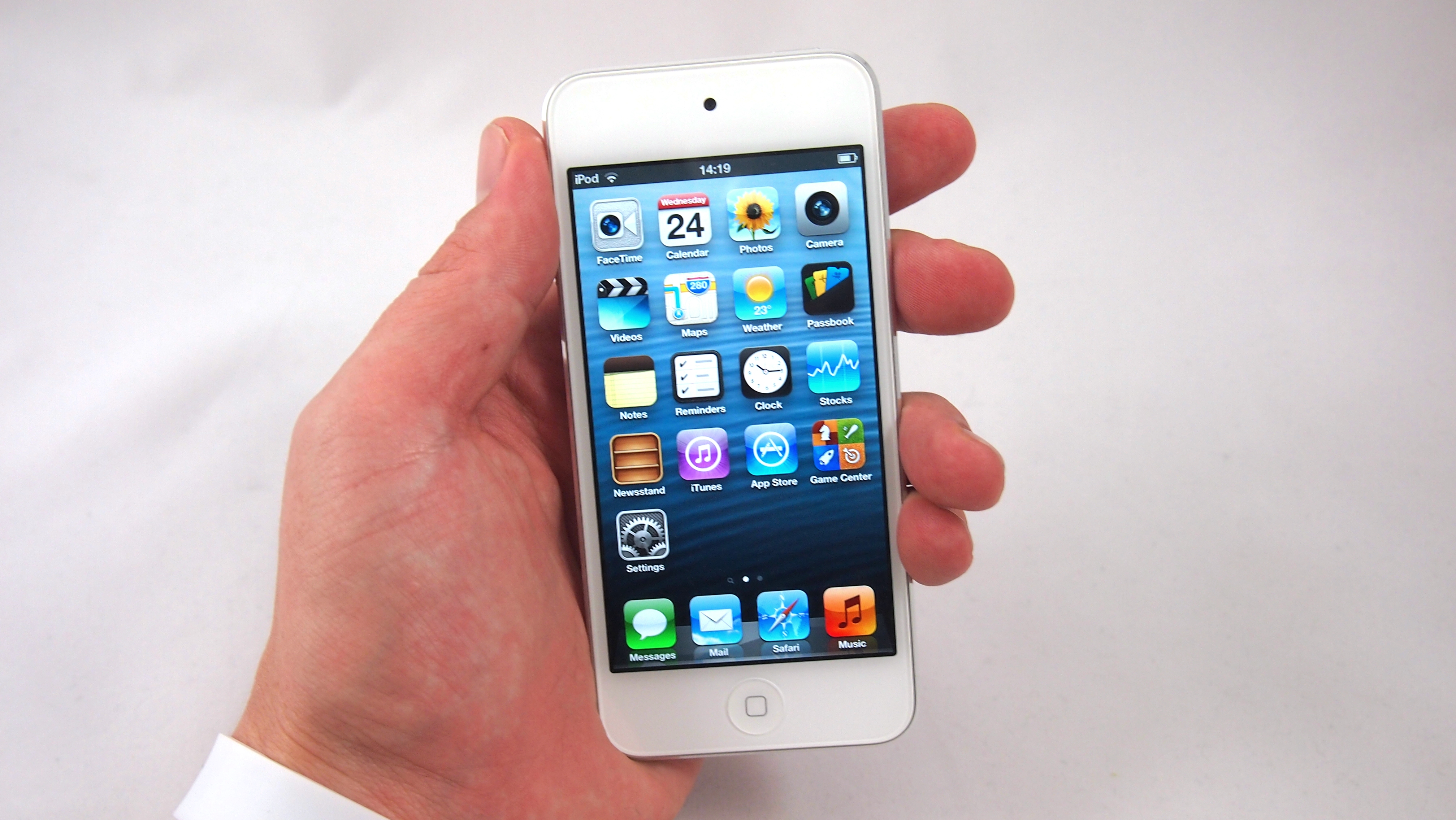
It takes a little bit of getting used to but you can still use the touch with one hand, at least in theory. In practice we found ourselves resorting to using two hands more often than we used to relieve some discomfort on our thumb.
As with the iPhone 5, the touch's 3.5mm headphone jack is located at the bottom of the device (which is where it was in the last generation model, too) and the 30-pin Dock connector has been replaced by a new more versatile Lightning connector.
While the new smaller connector has enabled some great improvements in terms of the size and thickness of the device it means that all your existing iPod accessories won't work with your new device, unless you buy the £25 'Lightning to 30-pin adaptor'.
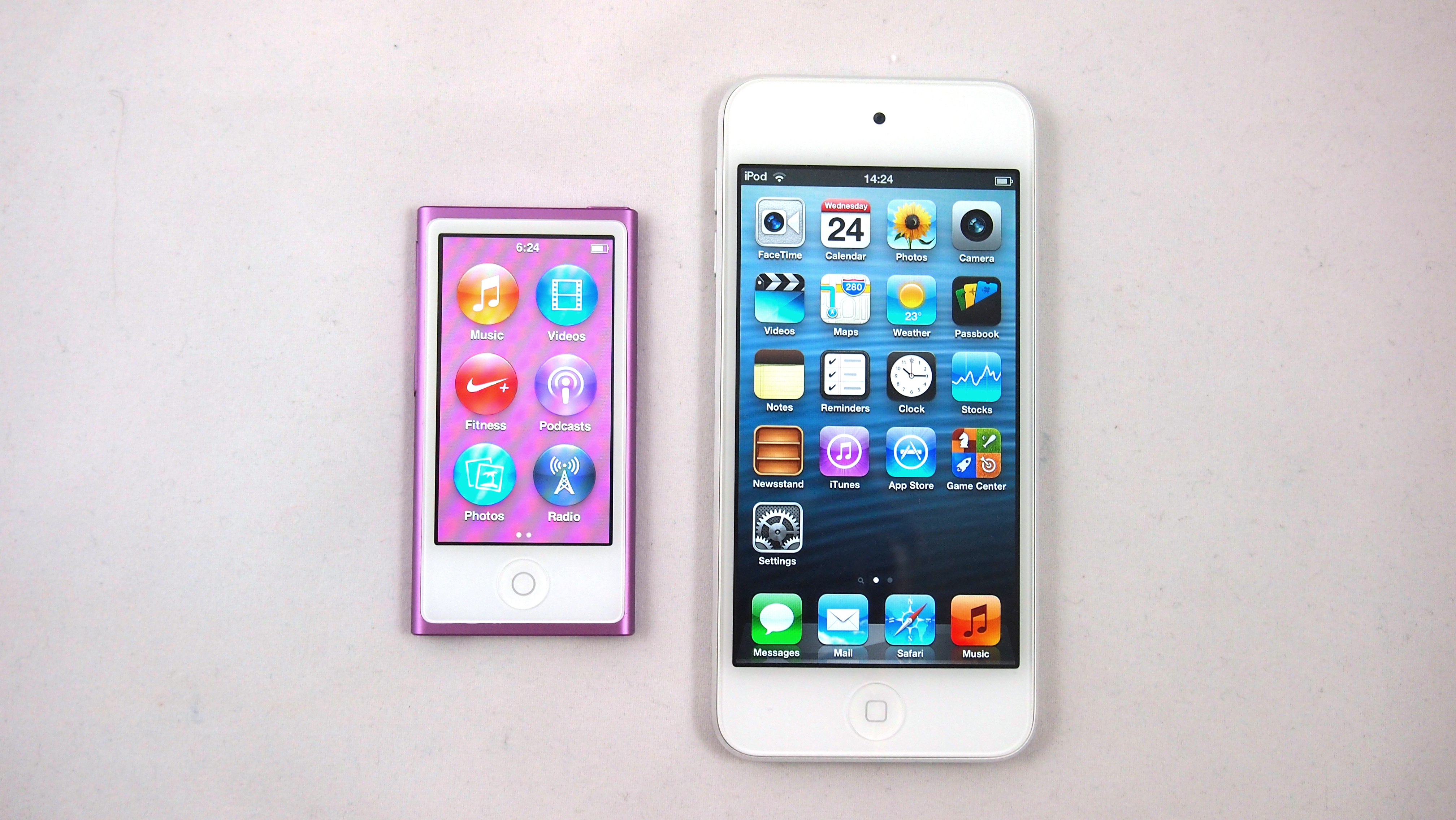
It also means that you'll initially only have one charging lead that will work with your new device. Like most iPod touch owners we found we'd acquired a few iPhone cables over the years and suddenly going back to only having one cable that worked was a shock to the system, and we had to keep remembering to take it around with us everywhere we went.
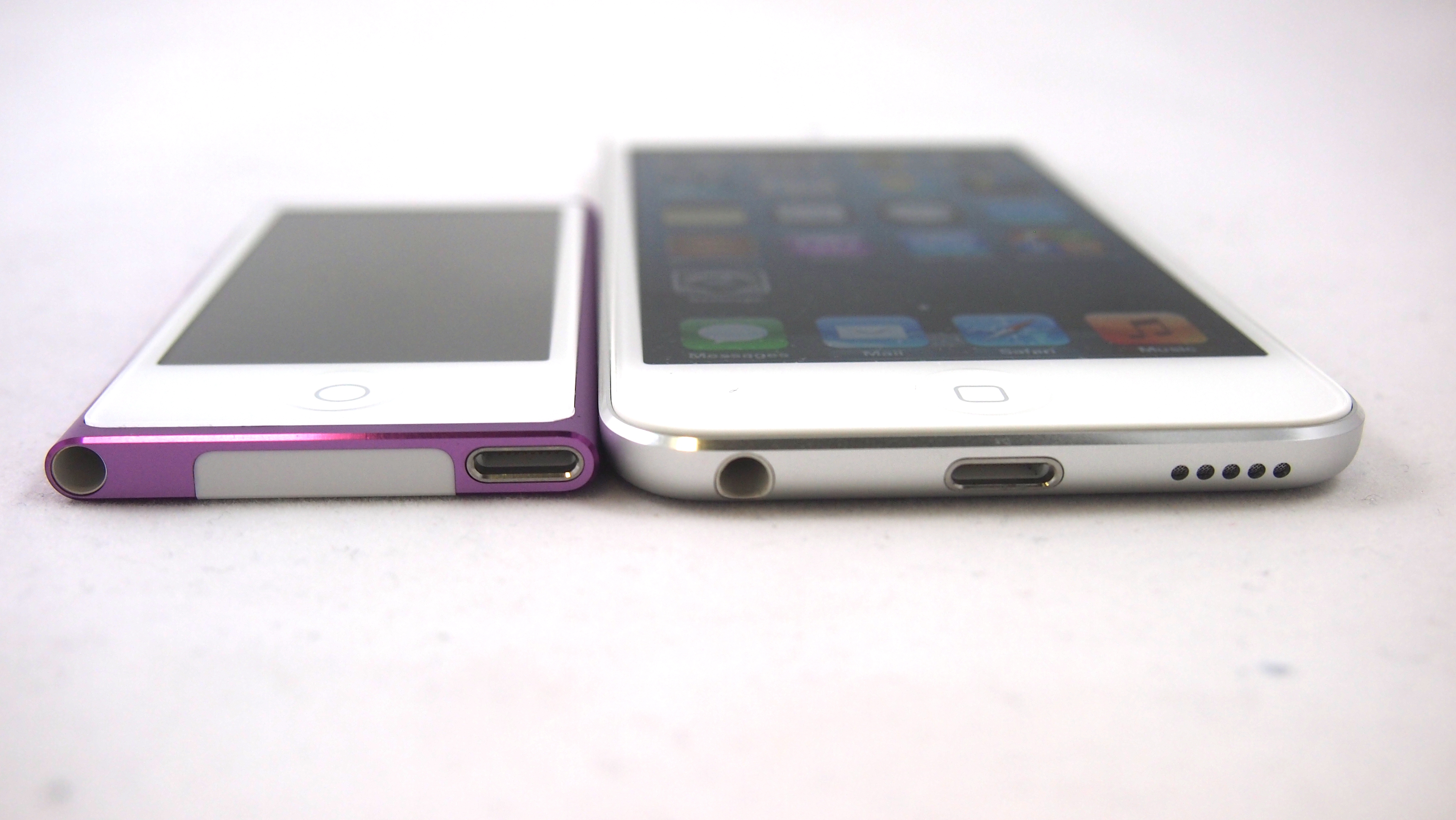
With the iPhone 5 you get a wall charging plug in the box with your Lightning to USB cable, but no such luck with the iPod touch 5th Generation, so just bear that in mind.
Inside the box you'll find some of the new Apple EarPods earphones – while still not comparable with noise-isolating in-ear solutions these new earbuds are still a huge improvement over the previous Apple earphones, with much better bass frequencies.

Graham is the Senior Editor for AI at TechRadar. With over 25 years of experience in both online and print journalism, Graham has worked for various market-leading tech brands including Computeractive, PC Pro, iMore, MacFormat, Mac|Life, Maximum PC, and more. He specializes in reporting on everything to do with AI and has appeared on BBC TV shows like BBC One Breakfast and on Radio 4 commenting on the latest trends in tech. Graham has an honors degree in Computer Science and spends his spare time podcasting and blogging.
